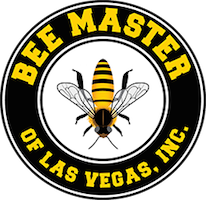Welcome back for another Bee of the Month blog! Leaf-Cutter Bees are curious little creatures that don’t attack if you happen to be near their nest and are beneficial to gardeners. Here’s how you can identify leaf-cutter bees and how you can attract them to your backyard!
Identifying Leaf-Cutter Bees
Part of the Megachilidae family, the leaf-cutter bees are pollinators that gardeners hope to attract! Leaf-cutter bees are black, furry, and about the same size as a honeybee. You can identify a leaf-cutter by how females collect and transport pollen in their hair-like structures on the underside of their abdomen instead of the rear legs like many bee species. A female leaf-cutter’s abdomen may appear yellow or golden from the pollen.
Leaf-Cutter Life Cycle
Leaf-cutter bees mate shortly after emerging in the spring. The males live for a short time after mating while females search for nesting sites. Starting in late spring and into late summer, female leaf-cutters build their nests in small rotted wood cavities about the size of a pencil, empty snail shells, dry soil, and holes in concrete walls. When the larvae emerge, they feed on the food stored in the nest and pupate over the winter. In the spring, the new generation of adult bees chew their way out of the nest and the life cycle starts again.
Leaf-Cutter Nests
As solitary bees, leaf-cutter bees don’t live in colonies with a queen. Each female bee builds her own nest to raise her brood. To build their nest, the female leaf-cutter chews ¼ – ½ inch circular pieces from leaves or petals which layers into a thimble shape for each cell. A typical nest consists of up to 20 tightly-packed cells. The females begin the process of collecting nectar and honey which she mixes with her saliva to create food for her larvae. After placing food in each cell, she lays a single egg in each one. The final task of her life cycle is to close each cell with a seal made of chewed-up leaves.
Attracting Leaf-Cutters to Your Garden
Why should I attract leaf-cutters?
Leaf-cutters are important pollinators of wildflowers as well as squash, melons, peas, and other summer fruits and vegetables. Farmers use leaf-cutters to pollinate crops such as blueberries, onions, carrots, and alfalfa.
How do I attract leaf-cutter bees?
Instead of removing the nesting sites of bees, consider providing leaf-cutters with suitable housing! That rotting tree stump in the corner of your yard? Leave it to house leaf-cutter bees! You can also build a leaf-cutter bee hotel from scratch! Try out this tutorial: Build a Bee House.
What else should I do?
Choose broadleaf plants with soft, smooth, and flexible leaves and flower petals such as roses, azaleas, peas, lilacs, and ash trees. With leaf-cutters, you’ll notice leaves and petals with pieces cut out of them and that’s okay! Leaf-cutters don’t eat the leaves and petals and they won’t damage the health of your plants. Also, look out for creatures that may attack your leaf-cutters like wasps, beetles, and ants.
What if I don’t want leaf-cutter bees in my yard?
If you have unwanted leaf-cutter bees (or any bee for that matter) in your yard, call Bee Master of Las Vegas! We specialize in live bee removal in Las Vegas where we safely capture bees and remove nests and transport them to another location ensuring they stick around to continue pollinating our planet. If you are in need of live bee removal, call Bee Master of Las Vegas today!
